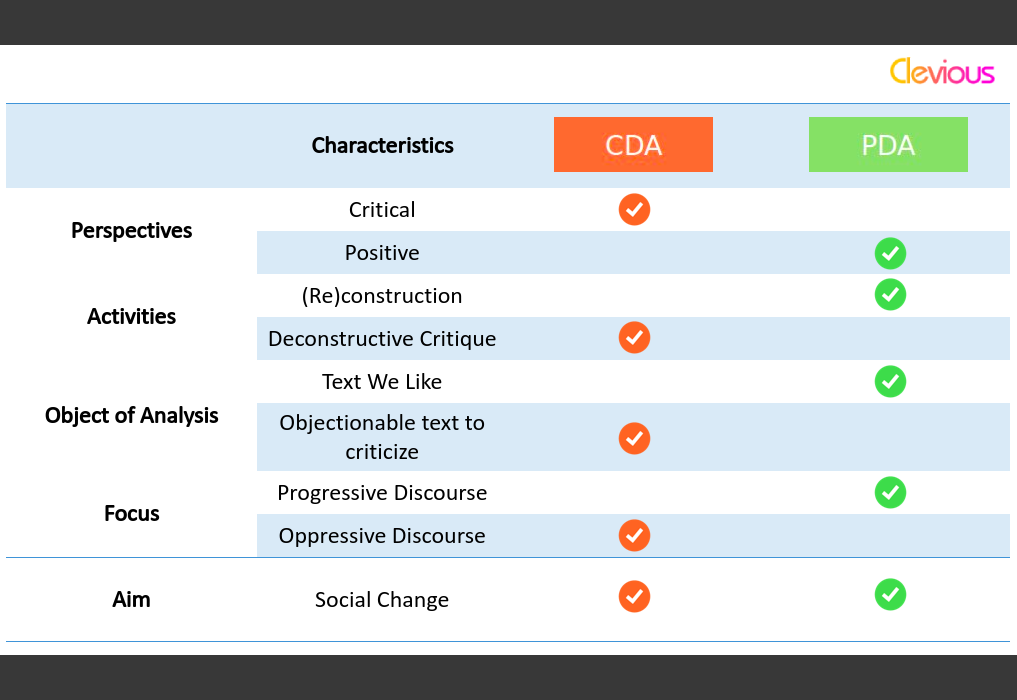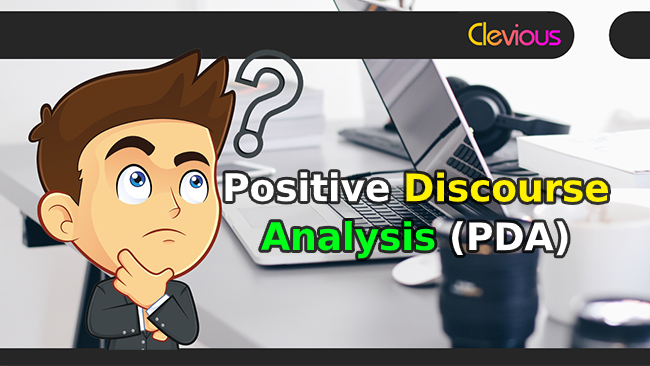Positive Discourse Analysis (PDA)
You as a student, a teacher, or a researcher in the human and social sciences departments, certainly have heard about Critical Discourse Analysis…?
It’s not surprising if almost everyone has heard about it since, in the Anglo-Saxon world, CDA is not only popular among academics in the said departments, but it seems that knowing it, at least, is unavoidable.
But, have you ever heard about Positive Discourse Analysis?
If not, then it’s totally okay; According to Jessica Hughes (2018), even in the USA “PDA remains largely unknown.”
In this article, I’m going to guide you through a brief discovery trip of the what, the why, the relationship and the differences between CDA and PDA… And then I will conclude it with some critics.
Some Definitions
Before I start, here are some definitions that can be inferred from the context, but it’s helpful to explicitly re-clarify them.
What is PDA and Why?
When I saw the title of Positive Discourse Analysis for the first time, it’s been years ago, the first question popped into my head was: Do we really need a whole academic approach to clap for the things we like?After doing some more research, I found out that that was not its main goal.
The real goal according to its initiator, James R. Martin, was that just like we try to understand how power and power relations produce and are reproduced through discourse from a critical perspective (CDA), it is also recommended to try and look at it from a positive standpoint as well (PDA).
The difference between the two perspectives is that normally, CDA would reveal, let’s say for example, how colonizers use language to minorize, dehumanize and justify their practices, however, this perspective fails to explain how practices progressed in the positive direction in favor of the colonized, and how the colonized struggled and got to independence. Martin explains that without PDA:
“Our understanding of how change happens, for the better, across a range of sites [is crippled…]. And this hampers design, and perhaps even discourages it since analysts would rather tell us how struggle was undone rather than how freedoms were won.” (2004, pp. 7-8 in Alessandro Capone and Jacob L. Mey, 2015)
How It’s Related to CDA?
James Martin starts one of his articles about PDA like so:
“In this paper, I suggest a complementary perspective, on language and semiosis, which functions to make the world a better place – which I refer to as Positive Discourse Analysis (PDA).” (Martin, 2004)
In the above citation, he clearly states that it is a complementary perspective which means that the positivity he favors depends on criticity and in this sense, PDA is like the shadow of CDA and the first would not have existed without the last.
James Martin likens this relationship to the Yin-Yang in which the deconstruction activity and the construction activity are both required. He, therefore, pleads for positivity in front of criticity:
“If discourse analysts are serious about wanting to use their work to enact social change, then they will have to broaden their coverage to include discourse of this kind — discourse that inspires, encourages, heartens, discourse we like, that cheers us along. We need, in other words, more positive discourse analysis (PDA?) alongside our critique; and this means dealing with texts we admire, alongside those we dislike and try to expose.” (Martin, p.196-7 in Alessandro Capone and Jacob L.Mey, 2015)
This implies that to tackle the problem from a positive perspective one should view it from a critical angle first. The critical standpoint here functions like a compass which helps the analyst get to answers about the nature of the problem to treat.
The impact of such perspective on how texts are selected turns it away from classical approaches of CDA: Henceforth, researchers select texts they like and wish their qualities highlighted in lieu of the ones they find objectionable and wish to critique. “PDA [then] describes what texts ‘do well’ and ‘get right’ in our eyes.” (Felicitas Macgilchrist, 2007).
Some Critics
Some of the critiques addressed against Positive Discourse Analysis are from Bartlett (2012). He thinks that the intense reliance on the analyst perspective drives PDA to disregard detailed contextual analysis that “not only accounts for how hegemonic discourses continue to circulate and whose interests they serve but also an analysis of the tensions which exist under the veneer of any hegemonic order so as to suggest how the emergent reconfigurations of power relations that are realized in isolation at the local level in the texts analyzed can exploit these tensions to undermine or reorient the existing structural conditions of domination within wider society.” (Bartlett, 2012, pp.7-8).Going this path will also affect how the analysis of texts is carried, he believes that PDA limits its scope to the textual and rhetorical level which ignores the “specifics of the interactional context and the knowledge and values of the communities in which they circulate.” (ibid.)
And finally, moving into that direction will also have consequences on the evaluation of discourses which replaces the communities’ voices with the trained analysts’ approval solely.
Summary
In this article, I led you into a quick discovery trip of what is PDA and how it’s different from CDA.I highlighted that positivity complements criticity and that implicitly this latter is viewed as a negative deconstruction of political issues.
Also, although the two perspectives share the same goal of a social change, they treat the same problem differently: While one goes to the negative direction, the other prefers the positive path: It focuses on progressive discourse rather than oppressive discourse, on the texts we like rather than the text we don’t and wish to criticize.
As a conclusion to all of this, here’s a table which summarizes the main differences between the two perspectives:

References
NB: The references above have been built with a web application called ZoteroBib. For more information, please check the article I wrote about this, titled “How to Cite and Build a Bibliography in Under 10 Minutes!”.

